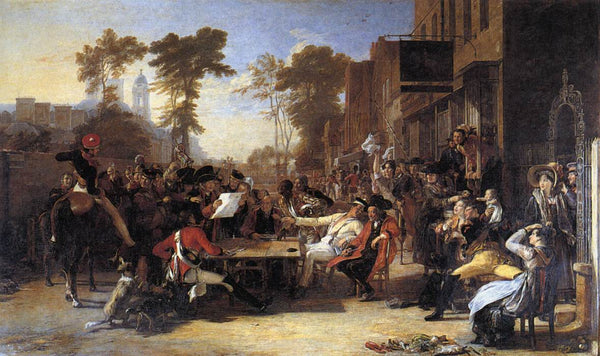Your Cart is Empty
35% OFF SALE ~ NO CODE NEEDED
Menu
-
- Tapestries
- Kaleidoscopes
- Our Artists
- Adam One
- Amanda Sage
- Andreilien
- Android Jones
- APEX
- Art of One
- Asirios
- Astral Visions
- Austin Mackereth
- Autumn Skye
- Benedigital
- BL Visuals
- Blake Drezet Art
- Boris Pelcer
- Burgandy Viscosi
- Chris Dyer Positive Creations
- Chris Miele
- Collin Salazar
- Danny Stephens
- Dela
- Dima Yastronaut
- Emily Kell
- Erica Robin
- Free Rein
- Gabriel Welch
- Giohorus
- Gwen A.P.
- I Am Electric
- Jack Laroux
- Johnathan Singer
- Kai Wilder
- Karen Schaefer
- Kirsten Zirngibl
- Light Wizard
- Logan Walden
- Luke Brown
- Marcelo Germana
- Mark Henson
- Martina Hoffmann
- Masha Falkov
- Mélissande Monette
- Moksha Marquardt
- Mr. Melty
- Mugwort
- Natural Warp
- Olivia Curry
- Paul Mez
- Phil Lewis
- Psiloteric Visions
- Psybe Industries
- PsytScene
- Robyn Chance
- Shane Myers
- Sylvia Ritter
- Silvio Vieira
- Simon Haiduk
- Soltice Son
- Steady Lifted
- Swartz Brothers Art
- Sylance
- TAS Visuals
- Totemical
- Trax (Desert Dwellers)
- Tyler Gentry
- Victor Olenev
- Wrenna Monet
- Info
-
- Text 631-743-0278
- Login
-
United States (USD $)

35% OFF SALE ~ NO CODE NEEDED
Add description, images, menus and links to your mega menu
A column with no settings can be used as a spacer
Link to your collections, sales and even external links
Add up to five columns
Add description, images, menus and links to your mega menu
A column with no settings can be used as a spacer
Link to your collections, sales and even external links
Add up to five columns
Add description, images, menus and links to your mega menu
A column with no settings can be used as a spacer
Link to your collections, sales and even external links
Add up to five columns
Add description, images, menus and links to your mega menu
A column with no settings can be used as a spacer
Link to your collections, sales and even external links
Add up to five columns
Add description, images, menus and links to your mega menu
A column with no settings can be used as a spacer
Link to your collections, sales and even external links
Add up to five columns
Add description, images, menus and links to your mega menu
A column with no settings can be used as a spacer
Link to your collections, sales and even external links
Add up to five columns
Add description, images, menus and links to your mega menu
A column with no settings can be used as a spacer
Link to your collections, sales and even external links
Add up to five columns
Add description, images, menus and links to your mega menu
A column with no settings can be used as a spacer
Link to your collections, sales and even external links
Add up to five columns

Happy Birthday Sir David Wilkie (Scotish Genre Scene Artist)
November 18, 2019 3 min read
Sir David Wilkie
Born on November 18, 1785, this Scottish painter is known for his genre paintings. His works included religious and historical subjects, portraits and contemporary scenes of everyday life. It was however, his keen eye for details and expressions that made his work special. He was so loved as a painter, that at one instance, barricades were erected to control the crowd of his admirers when one of his paintings was being exhibited. He was ordained as the Principal Painter to King William IV and Queen Victoria.
Early Life
David Wilkie was born in Pitlessie, Fife, Scotland to a parish Minister of cults, the Rev David Wilkie and Isabella Lister. He developed an interest in arts from an early age. His father was reluctant to let his son pursue a career as a painter but ultimately agreed to it. With the help of an influential acquaintance, the Earl of Leven, he got admission at the Trustees’ Academy in Edinburg. At the academy Wilkie was trained by John Graham. At still a young age, Wilkie gained reputation at the academy for his portrayal of characters and scenes of markets and fairs that he frequented. In 1803, a classical painting ofDiana and Calisto won him a ten-guinea prize.
He returned to Fife in 1804 and started working on his first major piece of art,Pilessie Fair,in which he portrayed 140 characters including relatives and neighbors. The painting was sold for £25. He later moved to the Royal Academy, London where he created important works likeThe Blind Fiddler,Village Politicians,Rent Day andThe Card-Players.Soon, he came to be known as “The Scottish Teniers”, after his much-admired Flemish painter.
Career as a Painter
He gained much appreciation for his works and in 1809 he was elected as an associate of the Royal Academy, while he was still shy by few weeks to be eligible for the post. Two years later, in 1811, he became a full member of the Royal Academy. He was already being reckoned as one of the finest painters of the time. His prominent works of the following years include Ale House Door, later renamed asthe village Fair, which he sold for £800,Blind Man’s Buff (1813) andThe Penny Wedding (1818).
The Chelsea Pensioners (1822) consolidated the reputation of David Wilkie as popular painter when barricades were erected to control the crowd of admirers who came to see it. In 1822, Wilkie was assigned the work of recording the visit of King George IV to Scotland, the first such visit since 1650 by any reigning monarch. In 1823, following the death of Sir Henry Raeburn, David Wilkie was anointed as the Royal Limner of Scotland. He had several sittings with King George IV to create a portrait to commemorate his historic visit to Edinburg in 1822. The sheer pressure of the portrait and some personal losses pushed David Wilkie to the brink of a nervous breakdown. To recover the trauma, he travelled through France, Spain and Italy from 1825 to 1828. On his return to England in 1828, he completed the portrait under the nameReception of the King at the Entrance of Holyrood Palace.
The time that he spent on his journey to the continent changed his painting to a free-flowing style. This was not well received by some of his critics. However, George IV, an admirer of David Wilkie as he was, appointed him to the honorary post of "Painter in Ordinary to the King" in 1830. In 1836 he was adorned with Knighthood.
In 1840, Sir David Wilkie embarked on a journey to the Middle East for inspiration for religious paintings. He travelled through Holland, Germany to reach Turkey where he spent four months. He then reached the Holy Land and later travelled to Egypt. He was taken ill on his way back to England. On the morning of June 1, 1841, Sir David Wilkie breathed his last near western Mediterranean. Wilkie was buried at sea in the Bay of Gibraltar.

Chelsea Pensioners Reading the Waterloo Dispatch
1818-22
Oil on canvas, 97 x 158 cm
Wellington Museum, Apsley House, London

The Defence of Saragossa
1828
Oil on canvas, 94 x 141 cm
Royal Collection, Windsor
**Commissions earned from this post by the Amazon Associates program. If you would like to write for the www.ThirdEyeTapestries.com team click here to send us an email.
Sources
https://en.wikipedia.org/wiki/David_Wilkie_(artist)
https://www.nationalgalleries.org/art-and-artists/artists/sir-david-wilkie
https://www.britannica.com/biography/David-Wilkie
https://www.tate.org.uk/art/artists/sir-david-wilkie-600
https://www.undiscoveredscotland.co.uk/usbiography/w/sirdavidwilkie.html
https://www.royalacademy.org.uk/art-artists/name/david-wilkie-ra
Subscribe
Sign up to get the latest on sales, new releases and more …